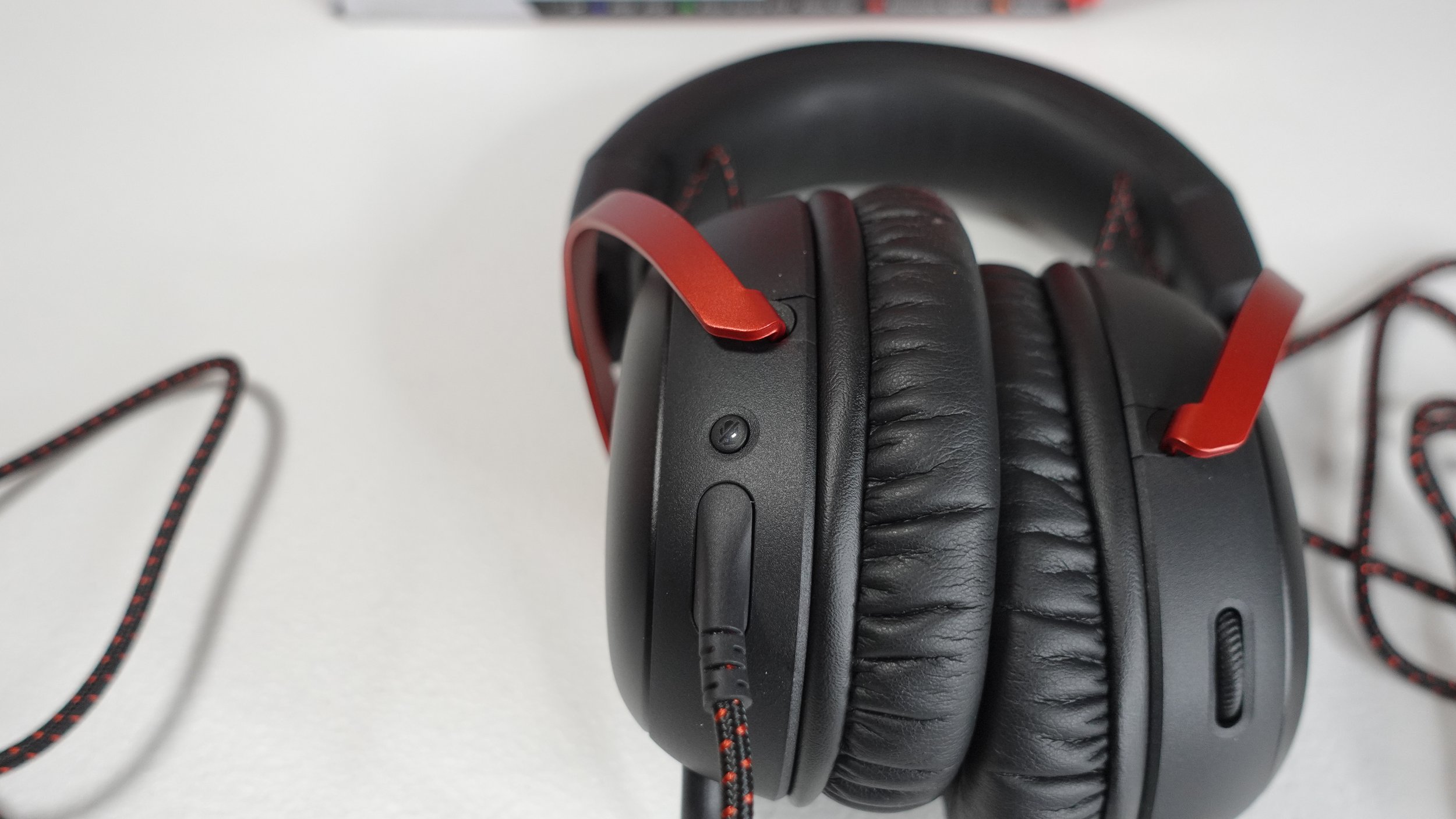HyperX Cloud III vs Cloud Alpha
Amazon links in this article are affiliate links. As an Amazon associate I earn from qualifying purchases.
Quick Summary
Differences
Comfort and Build Quality
Headphone Audio Quality
Microphone Audio Quality
Software (NGENUITY)
Verdict
Quick Summary
Both the HyperX Cloud III and Cloud Alpha are wired gaming headsets. The Alpha has a more natural sound than the Cloud III, but it doesn’t get as loud. The Alpha also has has thicker and firmer ear cushions with more clamping force, so it's a bit less comfortable over longer periods.
Lastly, the Cloud III has a better mic and it has extra software features.
Differences
Connectivity. The Cloud Alpha connects using a 3.5 mm cable only. The Cloud III comes with a USB-C and USB-A adapter that its 3.5 mm cable can plugged into as well.
The 3.5 mm cable is detachable on the Cloud Alpha, but non-detachable on the Cloud III.
Headphone audio. The Cloud III uses 53 mm angled drivers, and the Alpha uses 50 mm dual chamber drivers.
Microphone audio. The Cloud III’s mic is much clearer than the Alpha’s, but the latter’s mic also comes with a wind guard.
Controls. The Alpha has in-line controls on the wire for gain and mic muting. The Cloud III’s gain wheel and mic mute button are on the right and left ear cup respectively. The Cloud III’s mic also has a red LED when muted.
Cloud III mic mute LED.
Cloud III dongle on above and Cloud Alpha in-line controls.
Comfort and Build Quality
Cloud Alpha.
Cloud III.
Both headsets have mostly plastic bodies but with aluminum adjustment forks to keep the headband together. While pleather is used as the padding on both devices, they have a very different feel.
The Cloud Alpha’s ear cushions are firm and they have more clamping force than the Cloud III. The Cloud III’s memory foam is softer and more plush (similar to the Cloud II).
For all day use, I much prefer the Cloud III. After 2-3 hours, the Alpha's clamp becomes noticeable and traps in a bit too much heat in the summer.
Mic mute and volume wheel on the Cloud III.
Headphone Audio Quality
MWII with the Cloud Alpha.
The HyperX Cloud Alpha is for those looking for a sound that’s more balanced while still being highs oriented. In every instance of single player gaming and music, I prefer the sound of the Alpha. The sub-bass dips deeper and hits a bit more, and the upper midrange isn’t as boosted.
Conversely, The Cloud III is an ideal fit for competitive FPS games. It takes what the Cloud II did and refines that to make footsteps stand out as much as possible. The bass is quite weak, but the detail there is impressive. The sound is airy due to the pumped up upper mids and the treble is more prominent than the Alpha.
Additionally, the Cloud III gets a lot louder. An equalizer can get these two to somewhat mimic each other in the mids and highs, but the bass of the Alpha has more potentially to get boomy when boosted. You can’t make that happen with the Cloud III.
Resident Evil Village with the Cloud III.
Headphone Audio Summary
Similar to my Cloud II vs Alpha comparison, the short story here is: The Cloud Alpha is more versatile for every day use in single player immersive games, music, and movies. However, the Cloud III has a very specific sound signature to make footsteps and weapon reloads prominent for FPS players.
Microphone Audio Quality
The Cloud III’s mic is better than the Alpha in almost every way. It’s the clearest mic that I’ve used on any headset so far. It’s also much louder. The Alpha needs at least 12 dB of extra gain to be even usable in most cases. This makes the noise floor obnoxiously loud on the Alpha.
Even though the Cloud III’s mic doesn’t come with a pop filter, its plosive rejection is good enough to not need it.
Software (NGENUITY)
10-band equalizer in NGENUITY.
When HyperX finally gets the NGENUITY software to function properly, it will be a game changer for the Cloud III. It includes several EQ presets and a custom 10-band equalizer. It has DTS:X Spatial Sound, and you can control some other basic features like the mic monitoring and headphone volume with the software.
However, all these settings were very buggy in my experience and half the time they simply wouldn’t work at all. There’s potential here… but it’s not done cooking as of this review.
Verdict
Cloud III (left) and Cloud Alpha.
This will sound familiar to readers of my original comparison of the Cloud II and Cloud Alpha.
I recommend the Cloud III for FPS players specifically. The tuning is amazing for games like Call of Duty and Halo, and the comfort makes it perfect for marathon sesssions. It also has a better mic than the Alpha if you don’t have a standalone mic.
I recommend the Cloud Alpha for… basically everything else. The firm pads and low volume hold it back a bit, but the drivers have far more potential than the Cloud III. They aren’t tuned to make footsteps as prominent as the Cloud III, but for music, movies, and most games, they’re a better choice.


